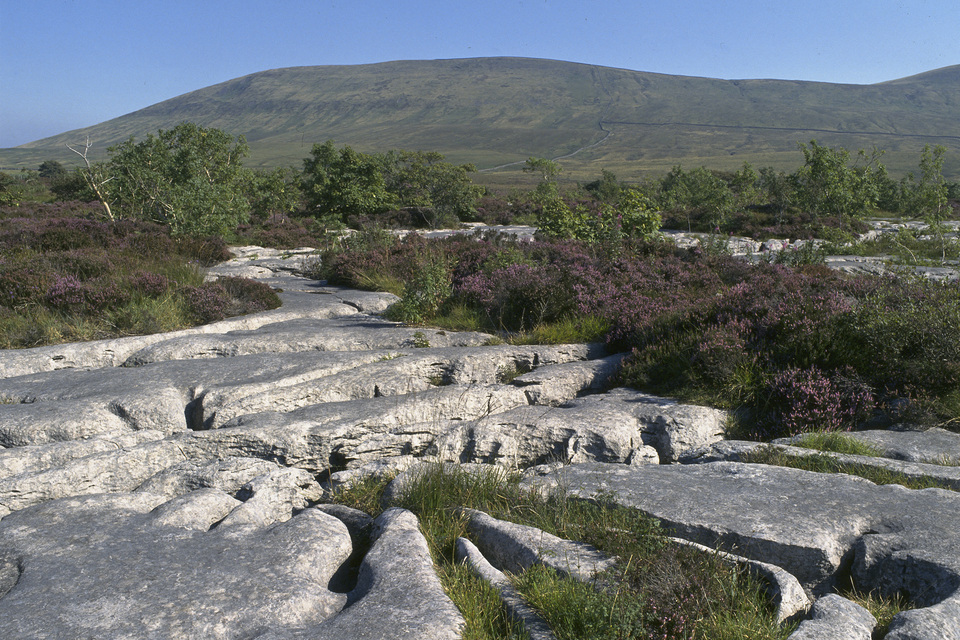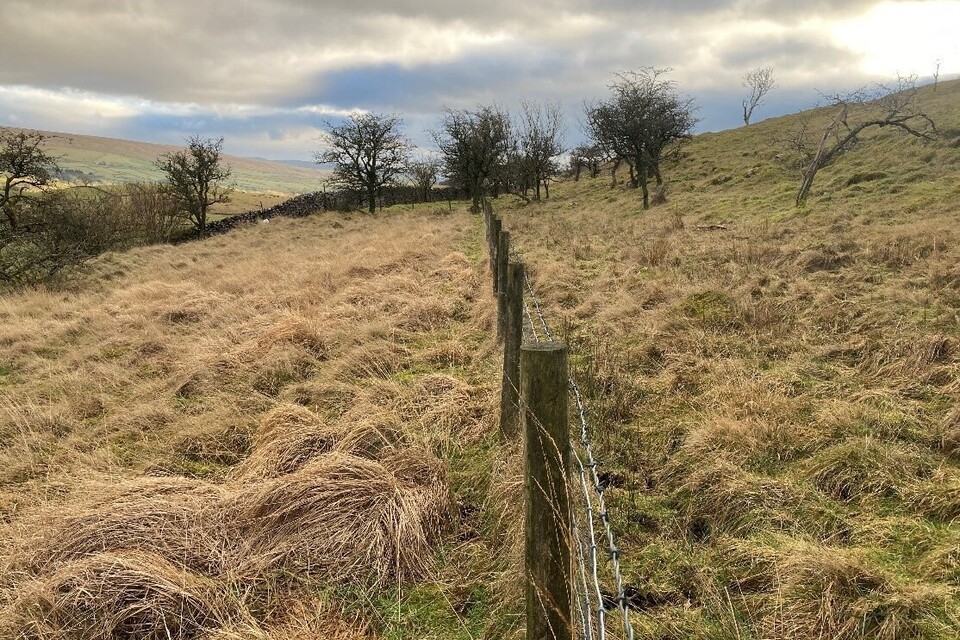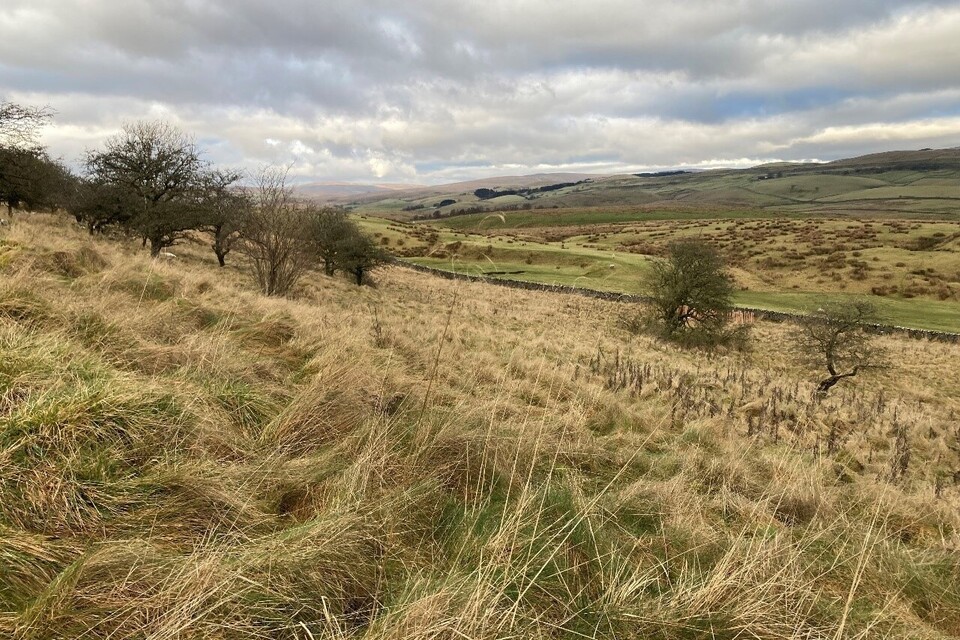Read how Ingleborough National Nature Reserve (NNR) trialled different tree protection methods to minimise impacts from sheep and deer grazing to support woodland regeneration.
Key facts
- site: Ingleborough Nature Reserve, Yorkshire
- size: 1,186 hectares
- establishment method: planting and natural regeneration
- type: ancient upland broadleaved woodland; natural regeneration
- funding: trees supplied through a partnership with the Woodland Trust as part of the Wild Ingleborough project
- key objective: nature conservation
Tree protection
- main mammals causing damage or risk to trees: sheep and deer
- main tree protection method: overstocking of trees, stocking rate, stocking density, timing and pattern of grazing
- duration of main tree protection methods: 5 years
A landscape of national and international importance
Spanning 1,186ha and reaching an elevation of 650 metres, Ingleborough NNR is situated at the heart of the Three Peaks area within Yorkshire Dales National Park. Designated as a site of special scientific interest and a special area of conservation, the reserve comprises of important upland habitats, including ancient ash woodland, limestone pasture, limestone pavement and blanket bog.
Ingleborough NNR is held and managed by Natural England and Yorkshire Wildlife Trust. The site is dedicated to protecting the biodiversity and geodiversity across this vast upland area, whilst also supporting scientific research and providing opportunities for visitors to enjoy and learn about this unique landscape.

Scar Close, one of the areas of bare limestone in Ingleborough NNR. Credit: Peter Wakely, Natural England
Replacing grazing sheep with cattle to improve woodland regeneration
Historically, sheep grazing was common in the reserve and managed through long-term agreements with graziers, but this practice prevented natural woodland establishment. In recent years, a transition away from sheep grazing to cattle grazing has created more favourable conditions for natural regeneration, allowing woodland to establish and gradually expand.
The cattle at Ingleborough NNR are a mixed-age herd of Red Poll that are accustomed to woodland systems. They are kept at very low stocking densities with roughly one cow per 5ha. Internal gates are left open, giving the animals freedom to roam throughout large compartments - overall promoting a more natural, low-impact grazing system. They are restricted from accessing areas of ancient woodland that are situated on internationally important limestone pavement, which have historically been enclosed.
Frank Morgan, Natural England Ranger for Ingleborough NNR, explains:
We've had a few experimental plots where we've had cattle on one side and no grazing on the other. We've found that you get a lot more young trees establishing in cattle-grazed areas. They do browse it but them breaking up the ground and creating seeding niches means you get way more trees establishing. We've really come to the conclusion that the net benefit of cows is trees.

Young trees establishing in cattle-grazed areas on the right-hand side of the fence. Credit: Frank Morgan, Natural England
Managing deer and other wildlife
Initially, the deer population density in the reserve was approximately 3.7 individuals per kilometre2. This resulted in significant browsing pressure on young trees. A deer culling programme has reduced this number to about 1.4 individuals/km2. This has allowed more trees (particularly from palatable species like downy birch and rowan) to establish successfully.
Whilst European rabbits and grey squirrels are present, the reserve's management does not consider them a concern.
Approaching tree protection in an upland site
The reserve primarily encourages natural regeneration in areas near existing woodland. However, in areas further from seed sources, tree planting has been necessary to kickstart woodland establishment, especially as growth in this upland site is particularly slow.
As part of the Wild Ingleborough project - launched in 2021 through a partnership between Natural England, Yorkshire Wildlife Trust, WWF UK, University of Leeds, United Bank of Carbon and Woodland Trust - approximately 150,000 trees have been planted between 2021 and 2025 to support regeneration efforts.
Various physical tree protection approaches have been trialled over this four-year period, including the use of 1.2m Tubex guards, 60 centimetre spiral guards, and 15cm vole guards, along with unprotected planting.
Some of the trees were tagged for monitoring by researchers from the University of Leeds. Preliminary results showed that tree guards can initially improve survival rates by prohibiting browsing. However, it was also found that they increase the trees' susceptibility to wind snap (occurring at the height of the tree guard or once it had been removed), and the use of tree guards appeared to reduce overall survival after 3-5 years, which could be due to the upland location of the reserve, that naturally receives high winds.
As a result, the reserve has shifted to a strategy of exclusively bare planting (planting without tubes and guards), but at double the desired stocking density. This approach led to a tree survival rate of over 50%, surpassing that of trees formerly protected by tree guards and, unlike spiral guards, is robust to the occasional incursion of neighbouring sheep.

Ingleborough NNR. Credit: Frank Morgan, Natural England
The additional benefits of bare planting at Ingleborough NNR
The Yorkshire Three Peaks walk goes through an area of planting on the reserve that initially used tree guards. Due to the high footfall, a lot of time and resource went into maintaining these guards for landscape appeal. Instead, bare planting results in a more gradual transition in the landscape compared to the sudden appearance of tree guards.
Nearly 80% of the tree guards used have now been collected by staff and volunteers and donated to other planting schemes in the neighbouring area. The collection of tree guards can be a slow process and is an extra time commitment beyond planting that should be taken into consideration when deciding how to protect young trees.
Together, with the careful reduction of grazing pressure from sheep, targeted deer management and a shift towards more effective planting methods, Ingleborough NNR have created the right conditions for young trees to take root and thrive across the reserve.






